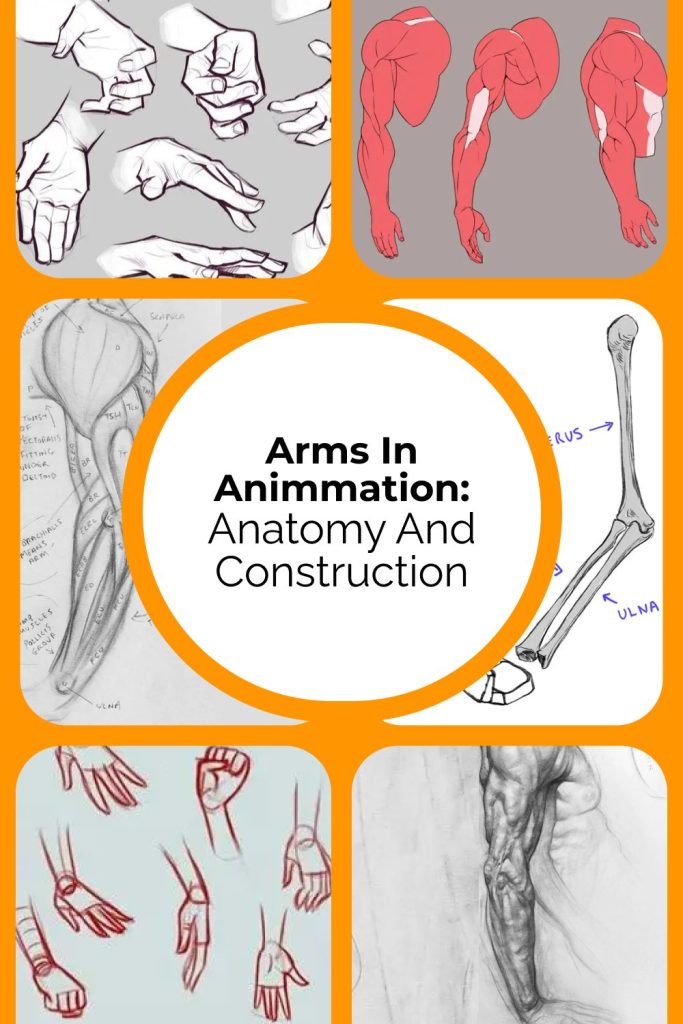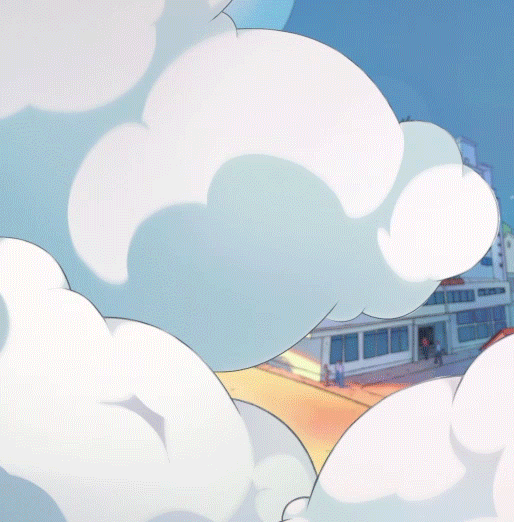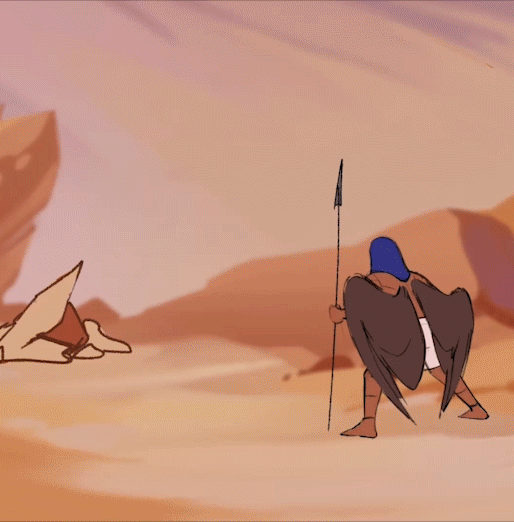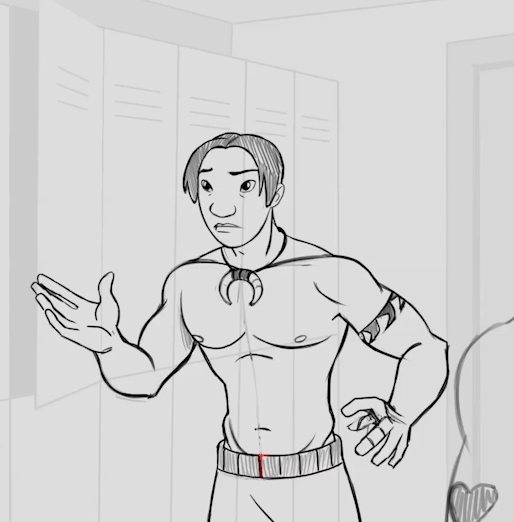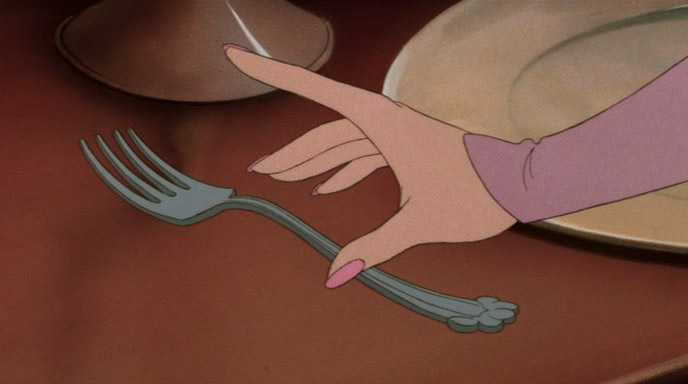
Why Animators Need to Master Drawing Arms
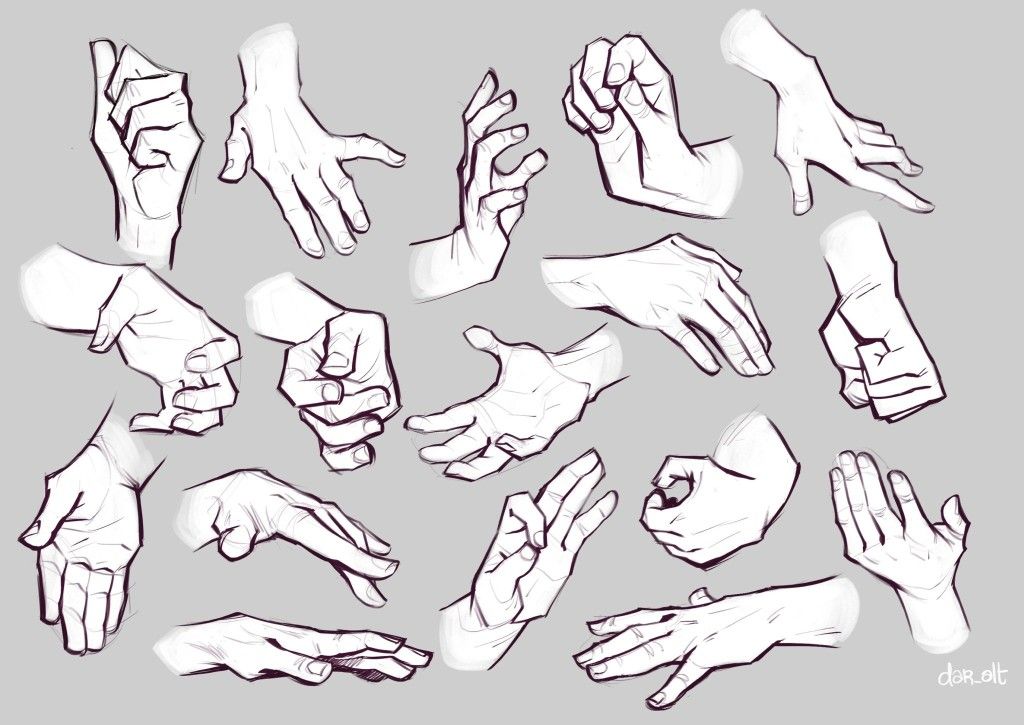
fr.pinterest.com
Whether it’s an expressive gesture or a subtle movement, arms are central to conveying mood and intent. They’re key tools for communication — and when drawn well, they can elevate a scene’s emotional power. But drawing arms is also one of the most technical challenges for character artists. In this post, we’ll explore what makes arms look real, how they move, and how to train yourself to draw them with confidence.
What Shapes the Arm’s Appearance
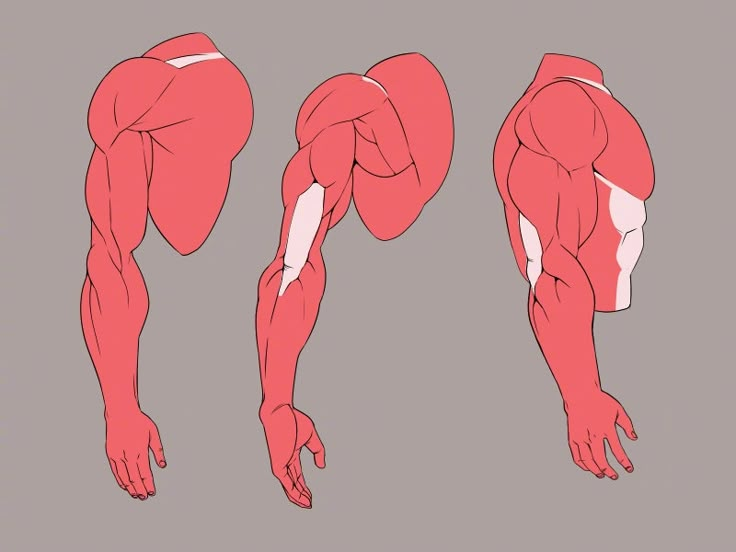
ru.pinterest.com
The appearance of an arm is influenced by more than just its anatomy. Factors such as muscle tone, fat distribution, age, gender, and lighting all play a role in how the form appears visually. A muscular character will have sharp angles and defined masses, while a younger or softer design might show more subtle transitions between forms.
Understanding this helps artists make intentional choices rather than merely copying what they see in a reference. By separating structural anatomy — bones and muscles — from surface features like skin, fat, or veins, artists can simplify forms and create readable silhouettes without losing credibility.
Get a better understanding of how to animate the body in conjunction with the arms in our <<Body Mechanics in Motion>> Course.
Bones: The Arm’s Inner Framework

The underlying bone structure defines the arm’s proportions and range of movement. The upper arm contains the humerus, a single long bone that connects the shoulder to the elbow.
In the forearm, the ulna and radius twist around each other, which allows for rotation and natural movement. The elbow, where these bones meet, acts as a hinge that restricts and directs motion. While the upper arm has a fairly stable axis, the forearm can twist in complex ways. Recognizing this contrast is crucial when you’re drawing arms in action poses, as it affects how the hand or elbow rotates and what anatomical features become visible from each angle.
Muscles: Volume and Mass
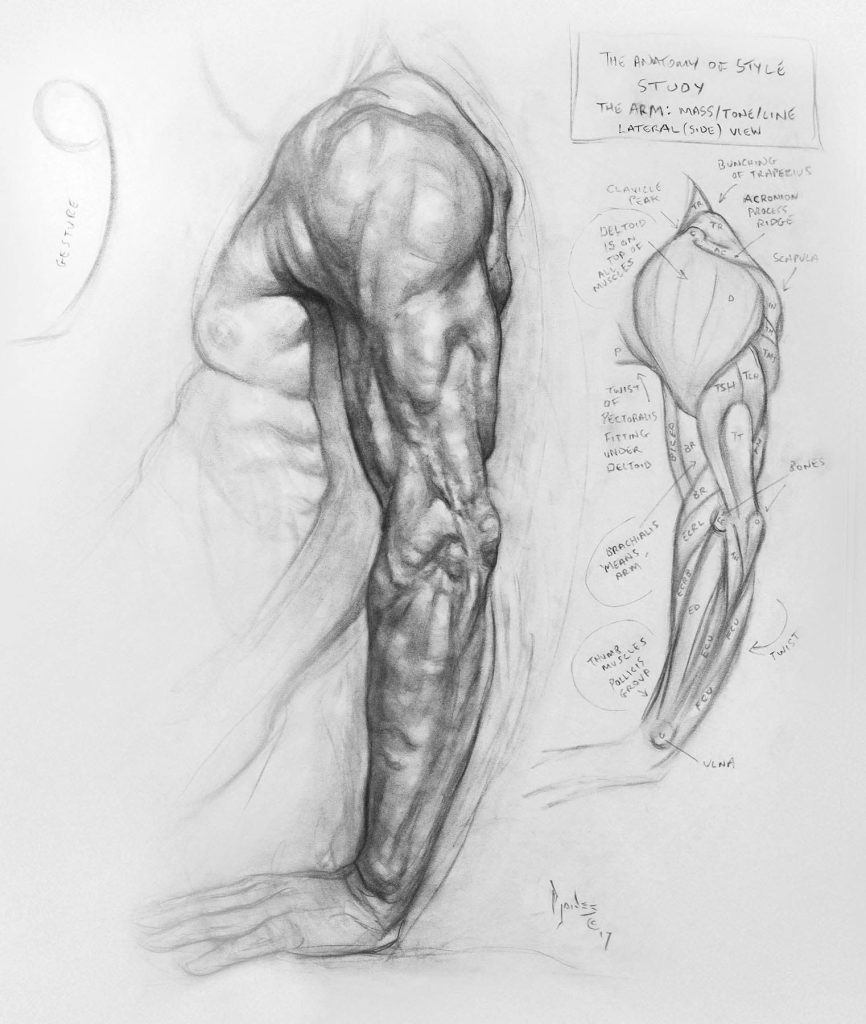
stylishbag.ru
The visible shape of the arm comes mostly from its muscles, especially in dynamic or flexed poses. The deltoid, which wraps over the shoulder, gives the arm its rounded top and visually connects the arm to the torso. Beneath it lies the biceps, which appear on the front of the upper arm and contract when the elbow bends. On the back side, the triceps play a key role when the arm extends, forming a defining contour. Other muscles like the brachialis and brachioradialis fill in the areas between the elbow and wrist. Forearm flexors and extensors create the volume of the lower arm. Depending on the pose and tension, these muscle groups become more or less prominent. The trick is to simplify them into masses you can move and rotate in space, not memorize every fiber, but learn to recognize patterns.
Elbows: The Forgotten Landmark
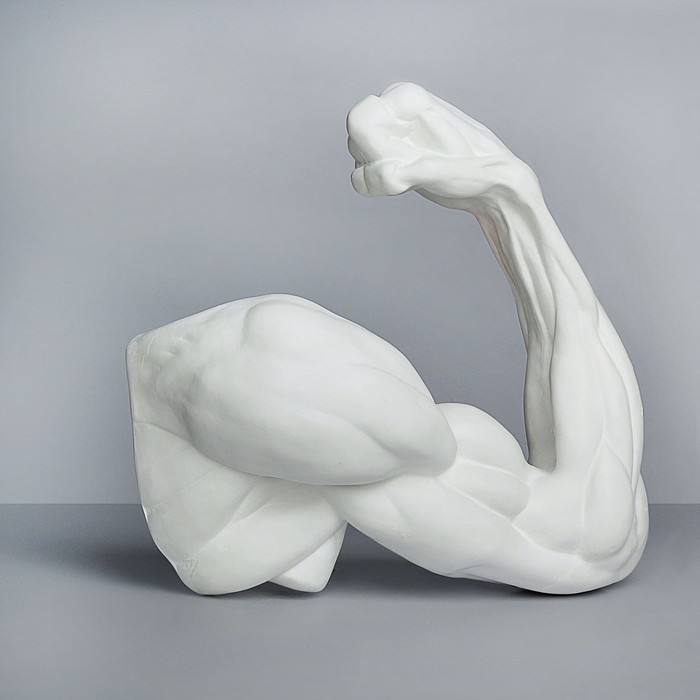
maxi-land.ru
Many beginners draw arms without anchoring the elbow, but it’s a critical part of structure and gesture. When the arm is bent, the elbow protrudes and forms a strong external corner. In a straight arm, it flattens, creating a dip on the inside and a slight outward bump on the outside. The elbow also shifts position depending on rotation — the way the ulna and radius wrap can make it visually slide. For animators and figure artists, this means the elbow must always be accounted for in action. Leaving it out or misplacing it weakens the line of action and creates confusion in anatomy. A reliable way to track the elbow is to build it into your gestural foundation, treating it as a directional pivot between the upper and lower arm.
Arms and Storytelling
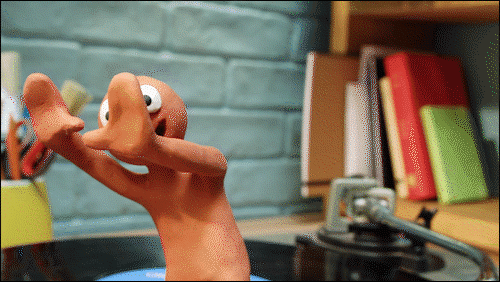
gifdb.com
In animation and character art, arms carry emotion just as much as faces. A clenched fist, a waving hand, a shoulder squeeze — these small motions deliver meaning and subtext. When the arms are stiff or anatomically incorrect, the whole pose can lose believability. But when they flow with the character’s intent, they reinforce the acting and narrative. Good arm drawing requires both an understanding of weight and of rhythm. The way arms stretch, twist, or fold in space can add elegance, awkwardness, strength, or fragility. That’s why learning arms is not just about drawing limbs — it’s about shaping performance.
How to Practice Drawing Arms
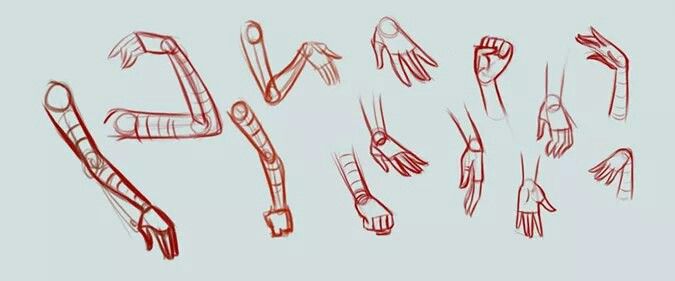
A strong practice routine starts with quick gesture studies. These help you capture motion and energy without overthinking anatomy. Instead of drawing individual muscles, aim to express the flow of the whole arm. Work with short video clips, gesture libraries, or live-action stills. Once you’ve captured the movement, go over the drawing again with a construction pass. Break the arm down into basic volumes, such as cylinders, blocks, or spheres, to define the rotation and proportions. After that, overlay surface anatomy based on how the pose deforms the muscles. Over time, this layered process builds both speed and clarity. It trains your hand to feel the motion and your eye to understand structure.
Final Thoughts
Learning to draw arms well is about observing both structure and expression. You don’t need to memorize every muscle, but you do need to understand the bones and major masses that define the form. Add to that a sense of gesture and storytelling, and your characters will start to feel real. Whether you’re designing an action pose or animating subtle motion, strong arm construction gives your work clarity and life. Keep practicing from both reference and imagination, switching between quick sketches and more detailed studies. With time and repetition, arms will stop feeling like a chore and start feeling like a language you speak fluently.
Want to Train Your Arm Drawing Skills?
💌 Join our Discord where we host weekly life drawing sessions, gesture drills, and sketching guides for character artists and animators.
